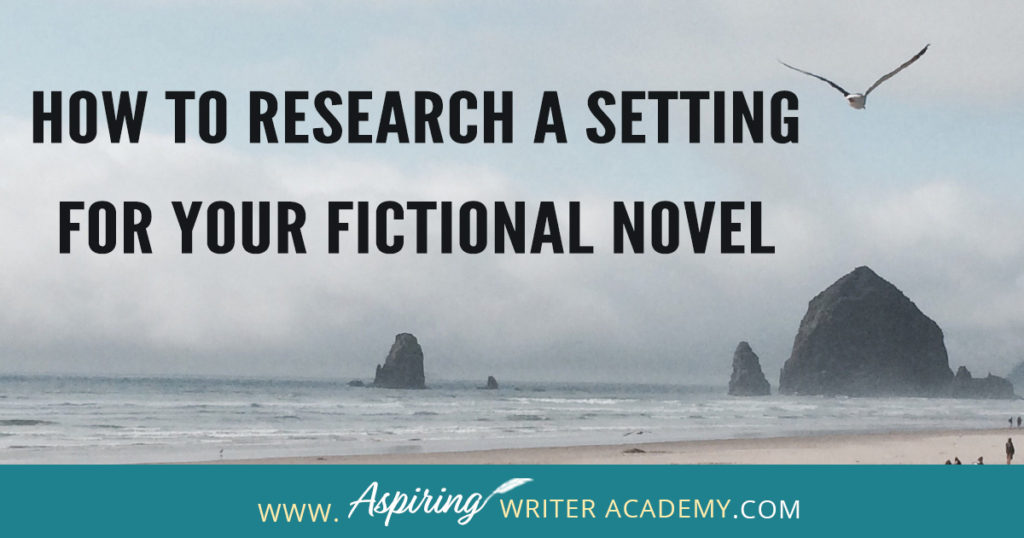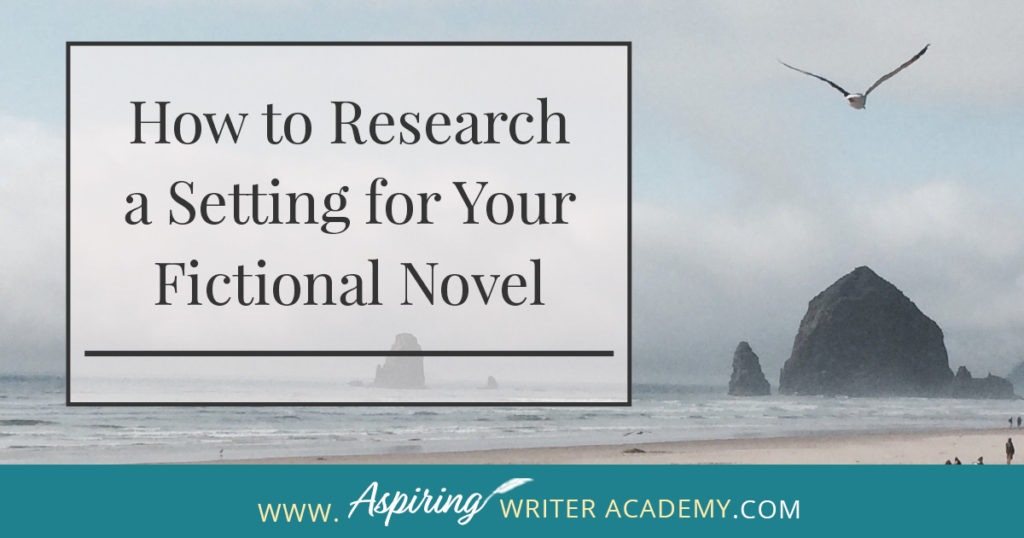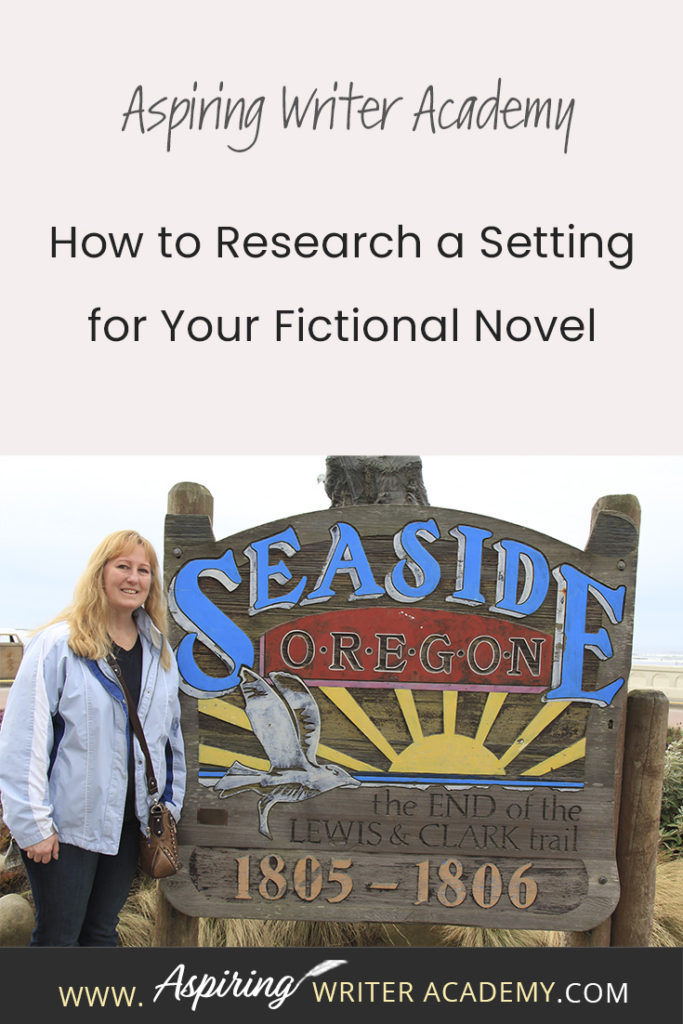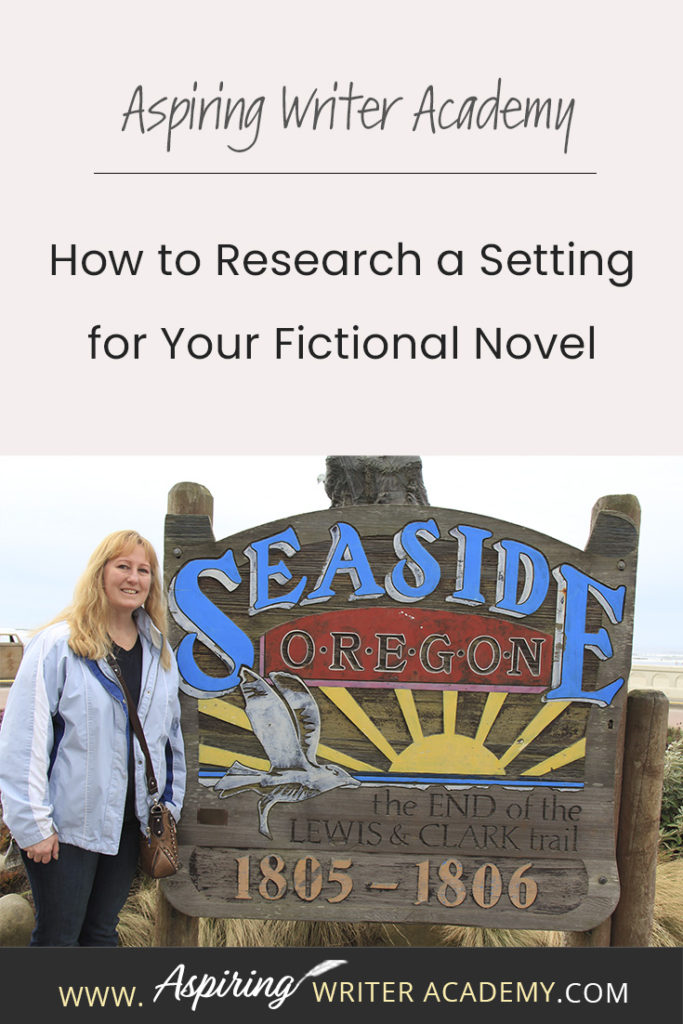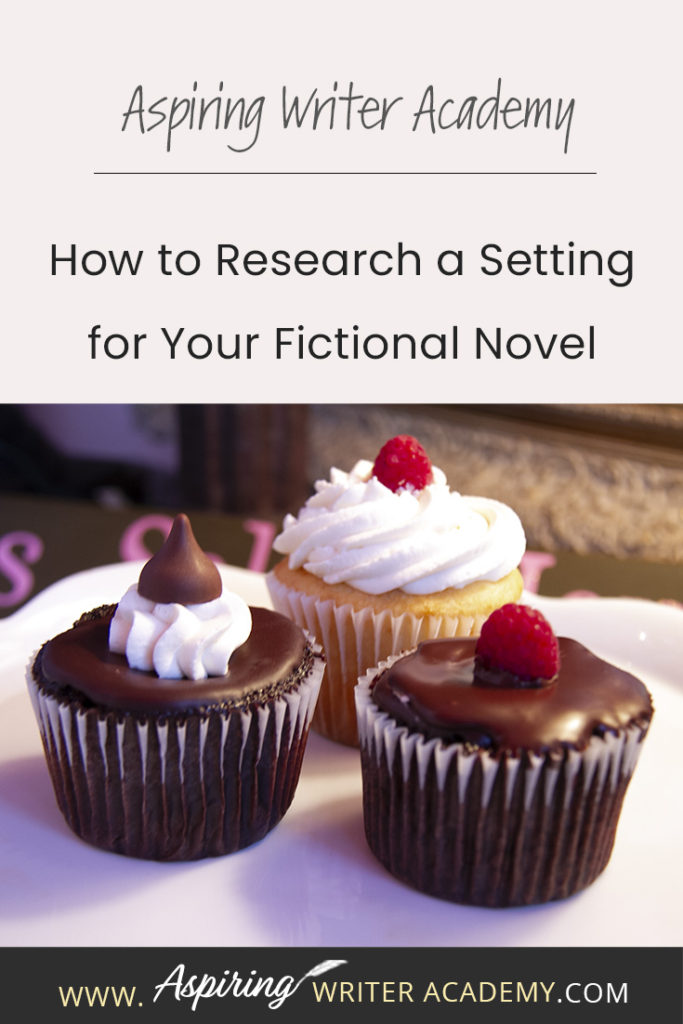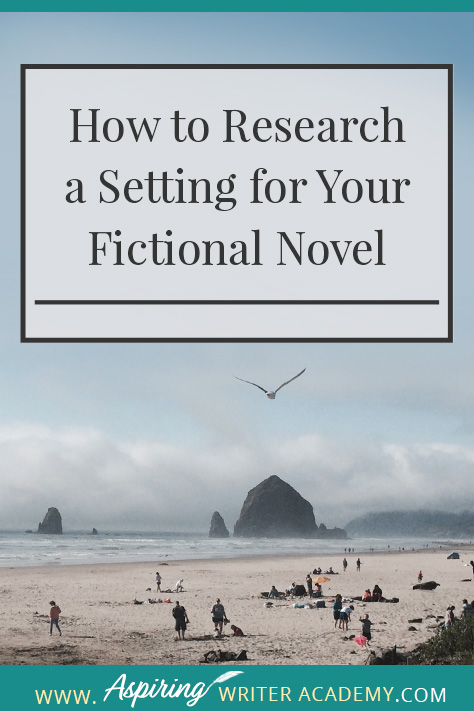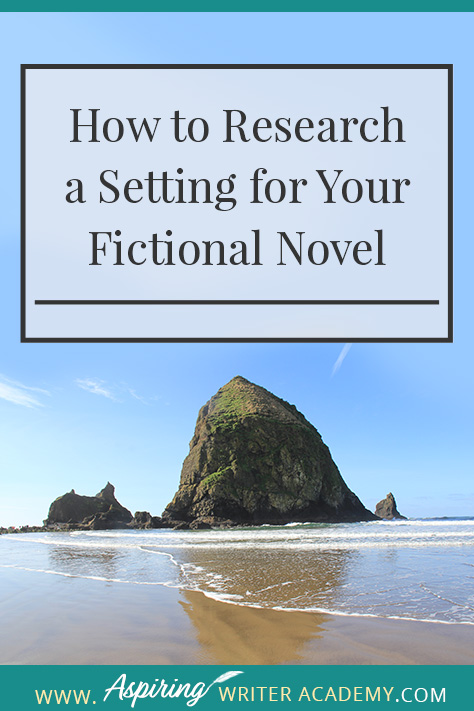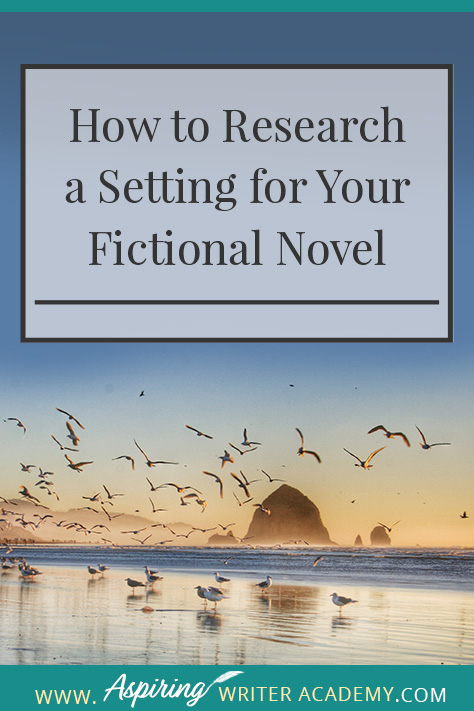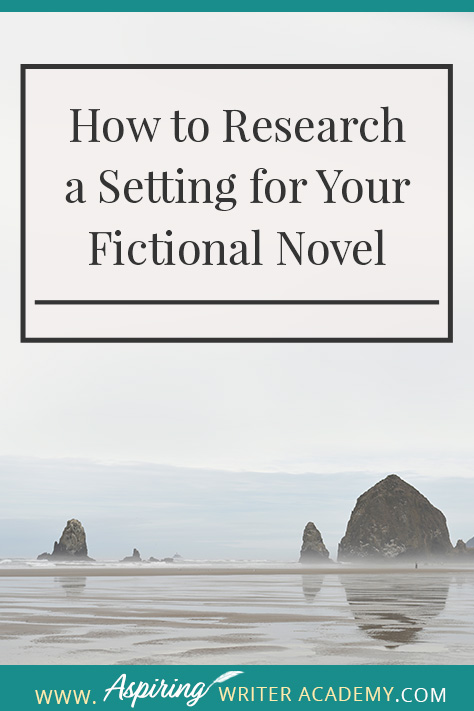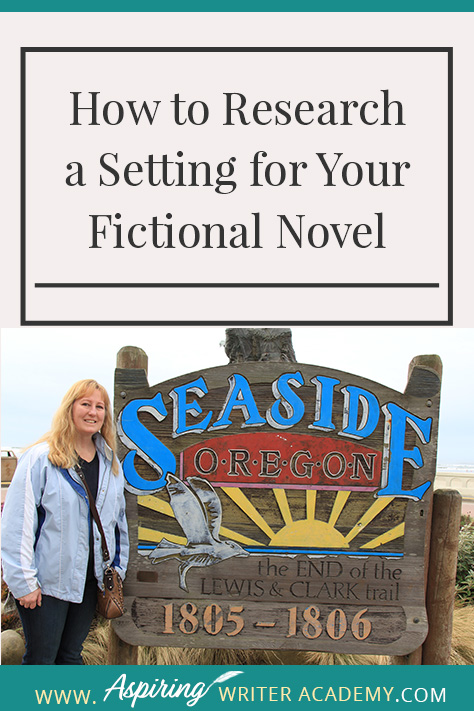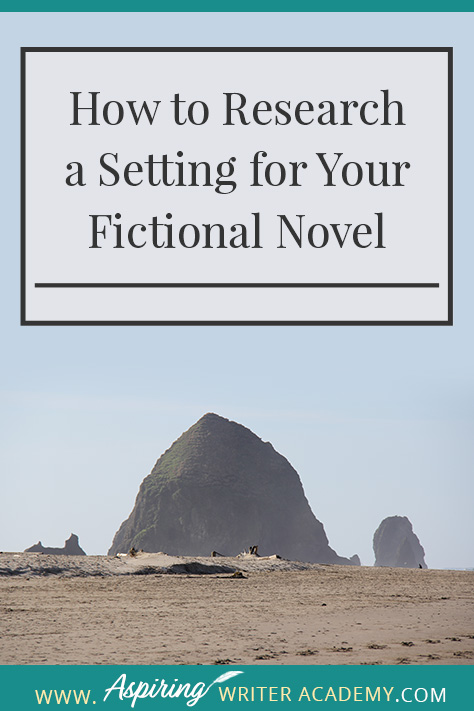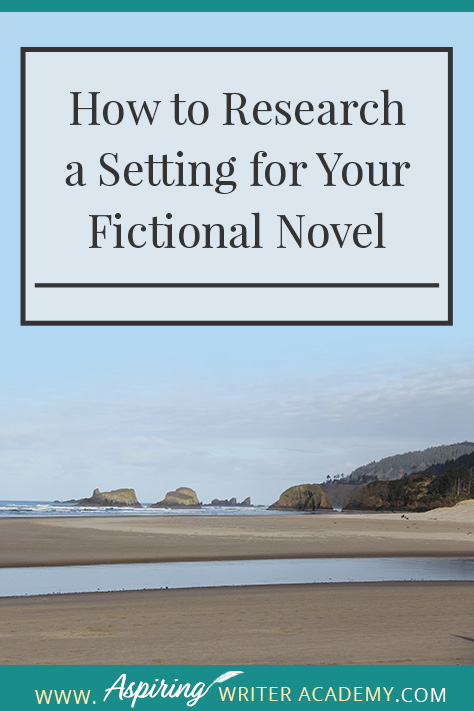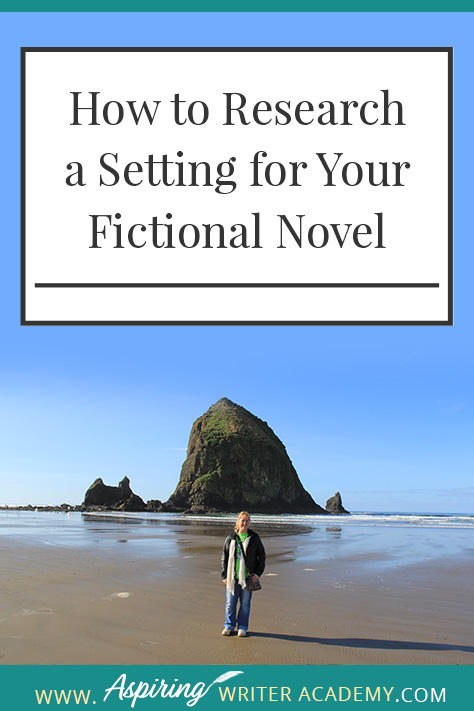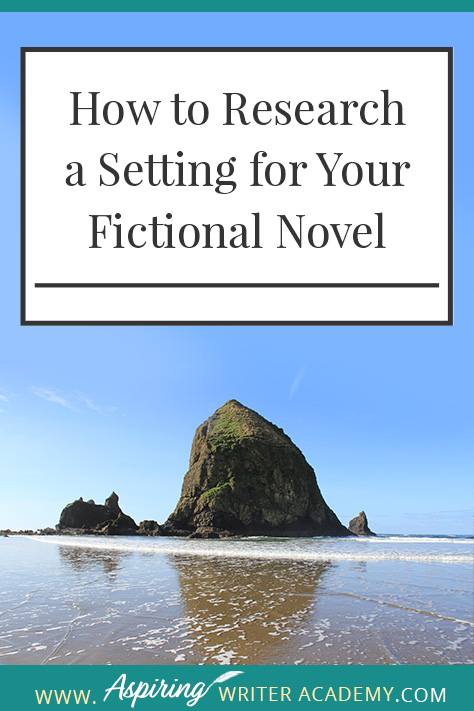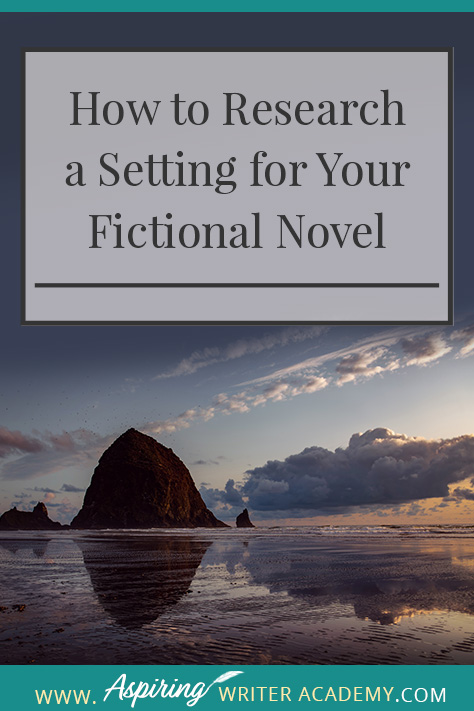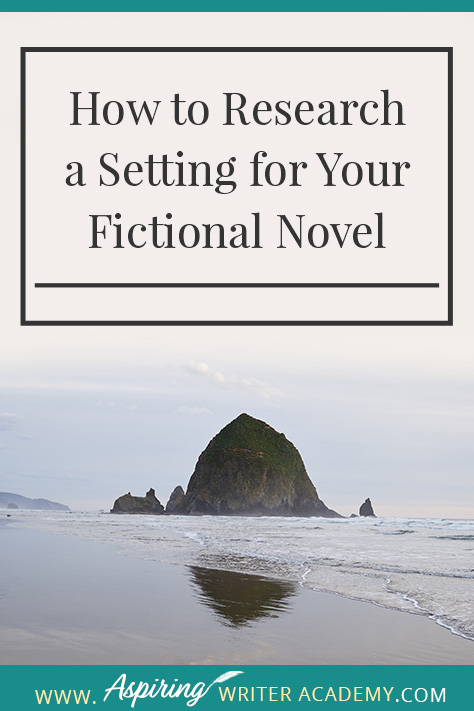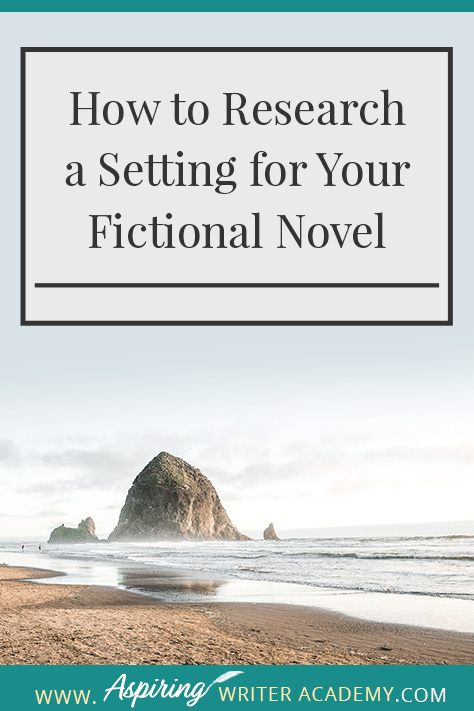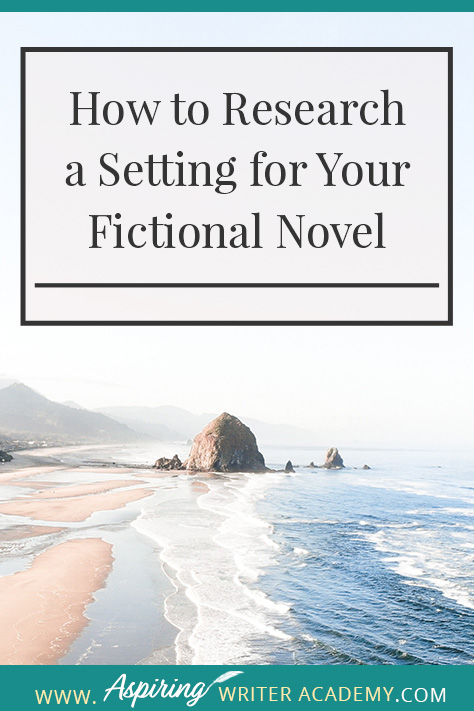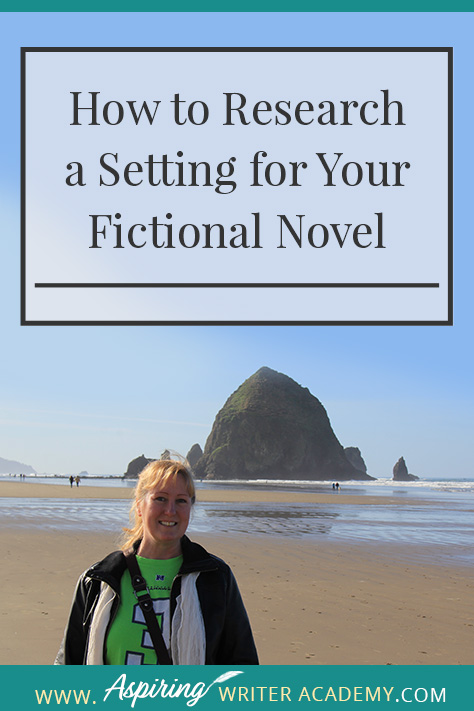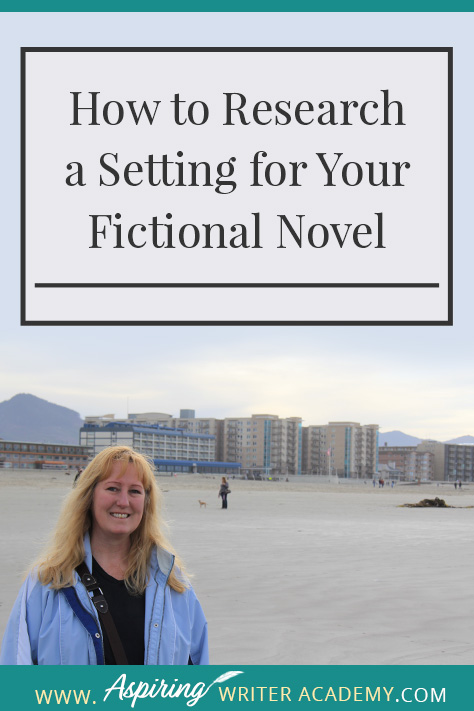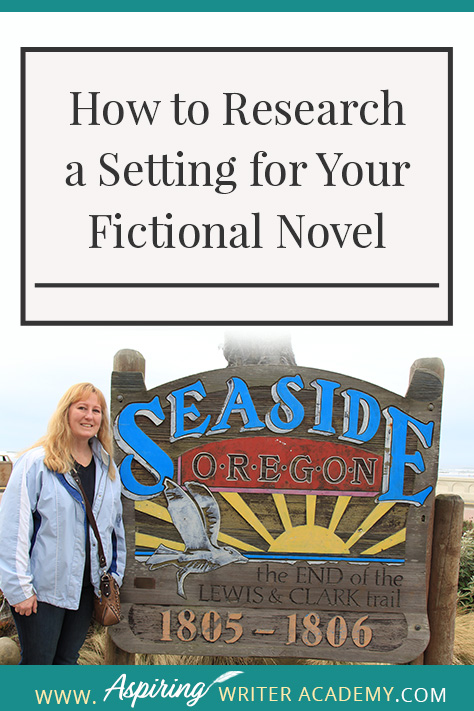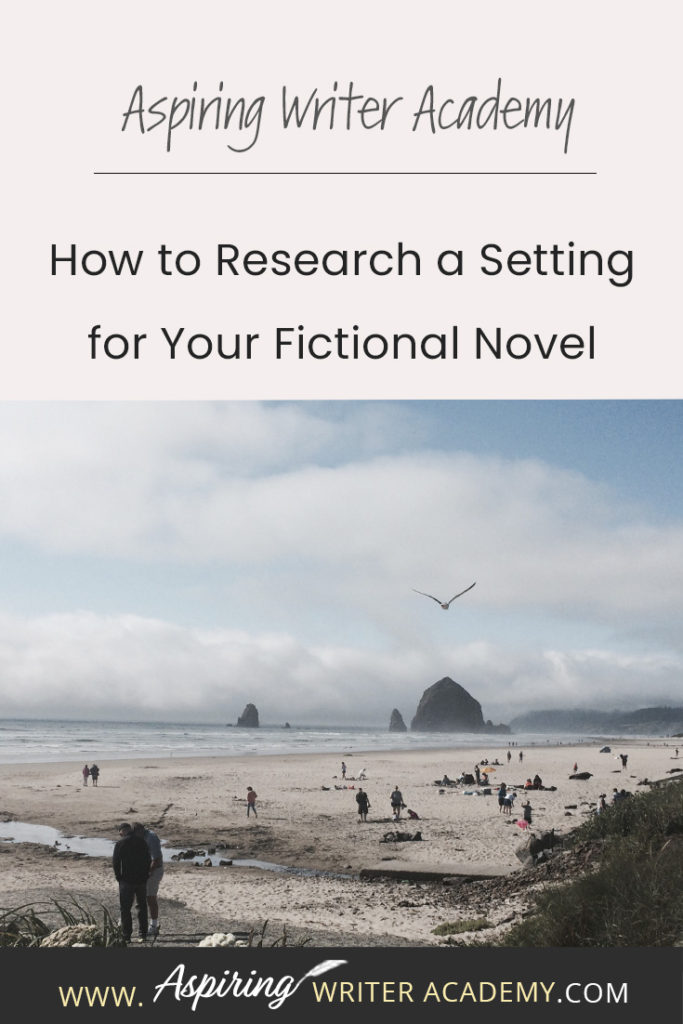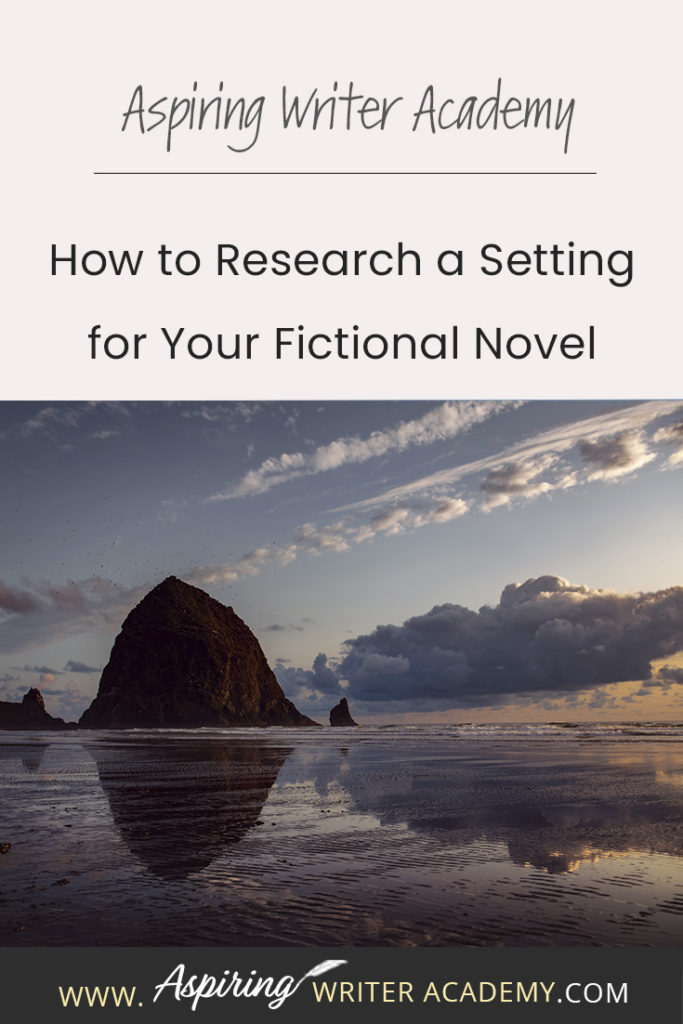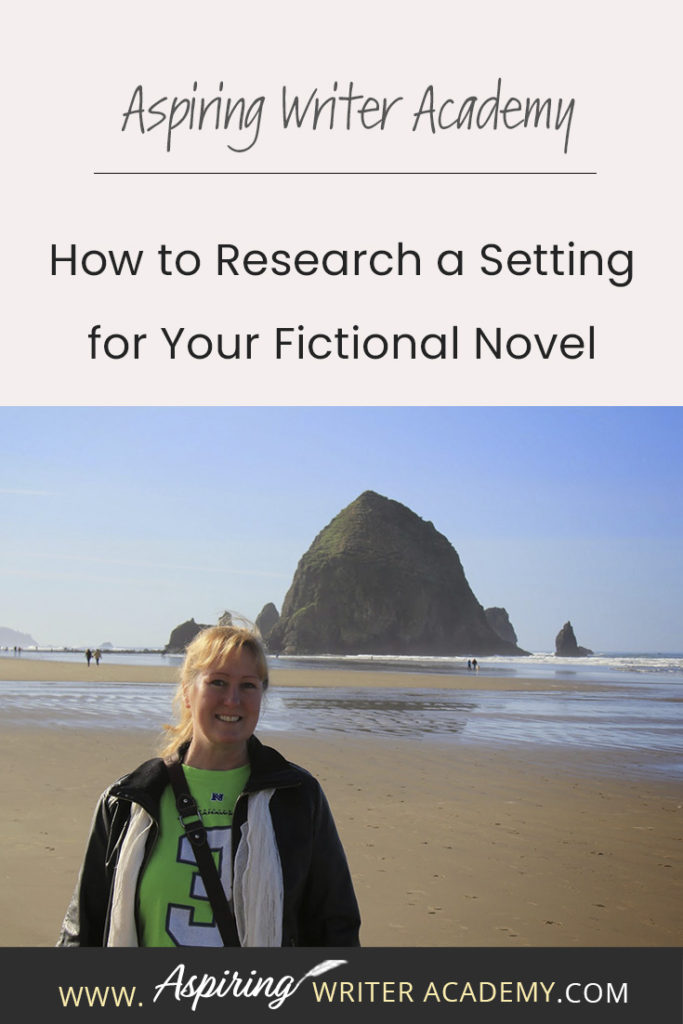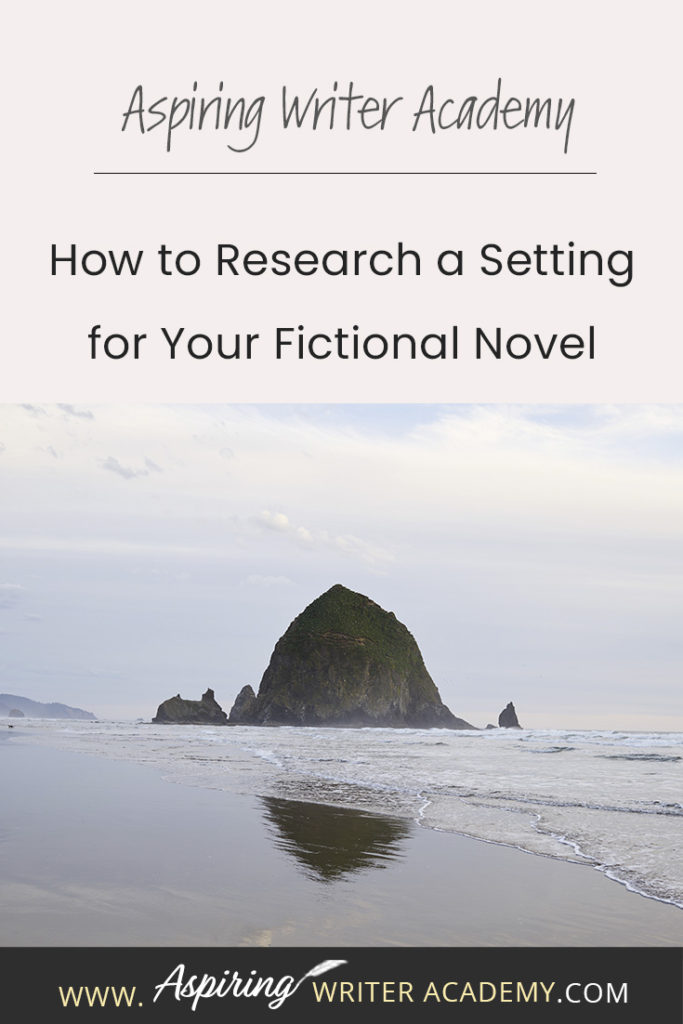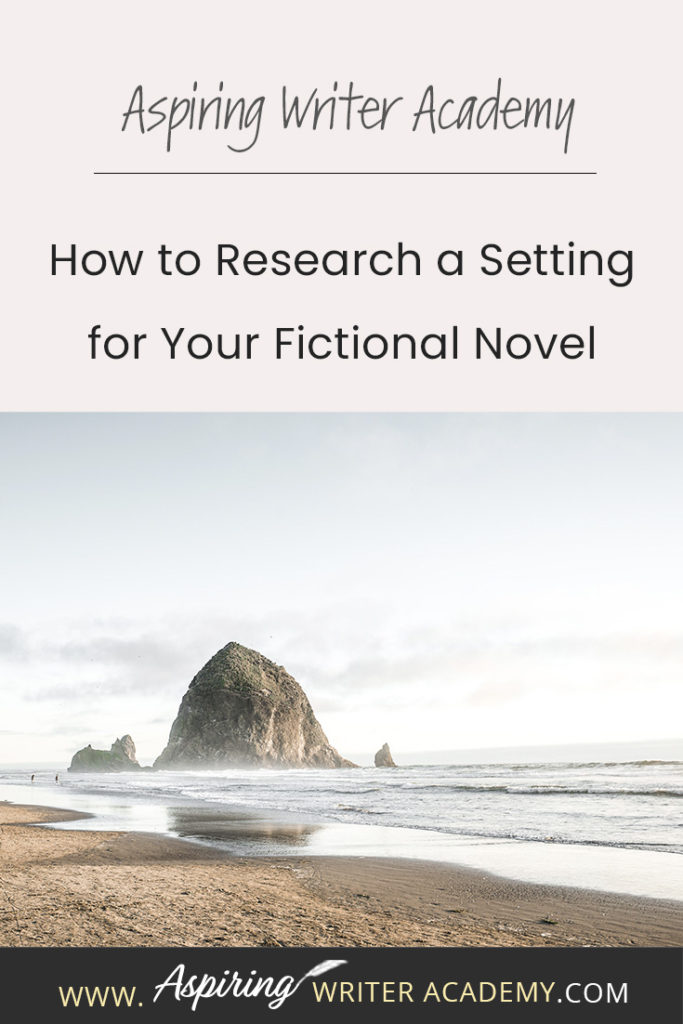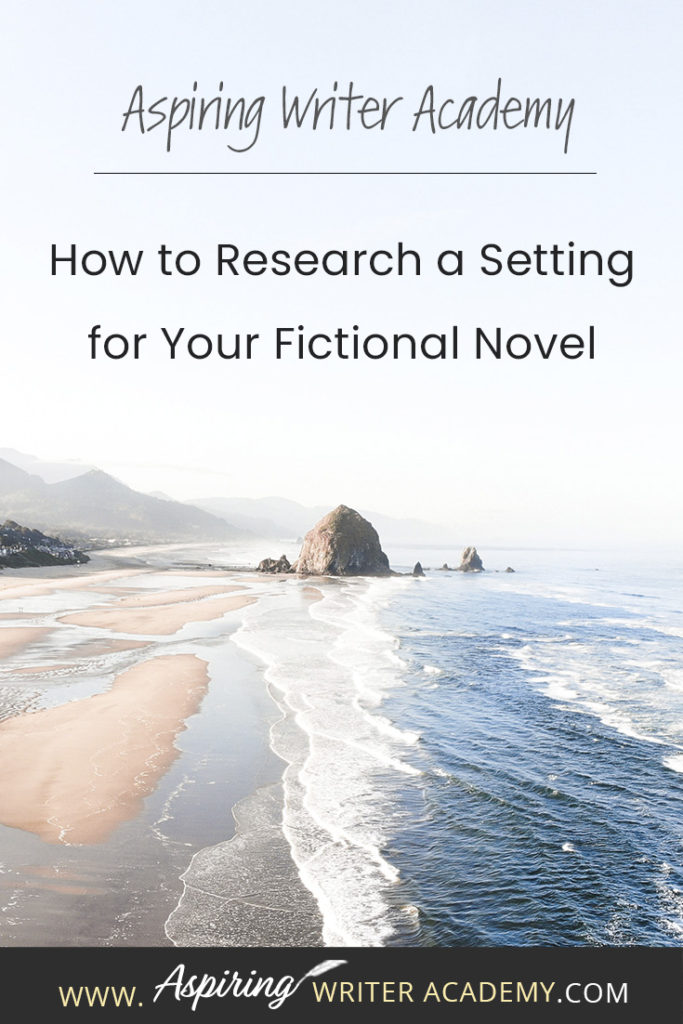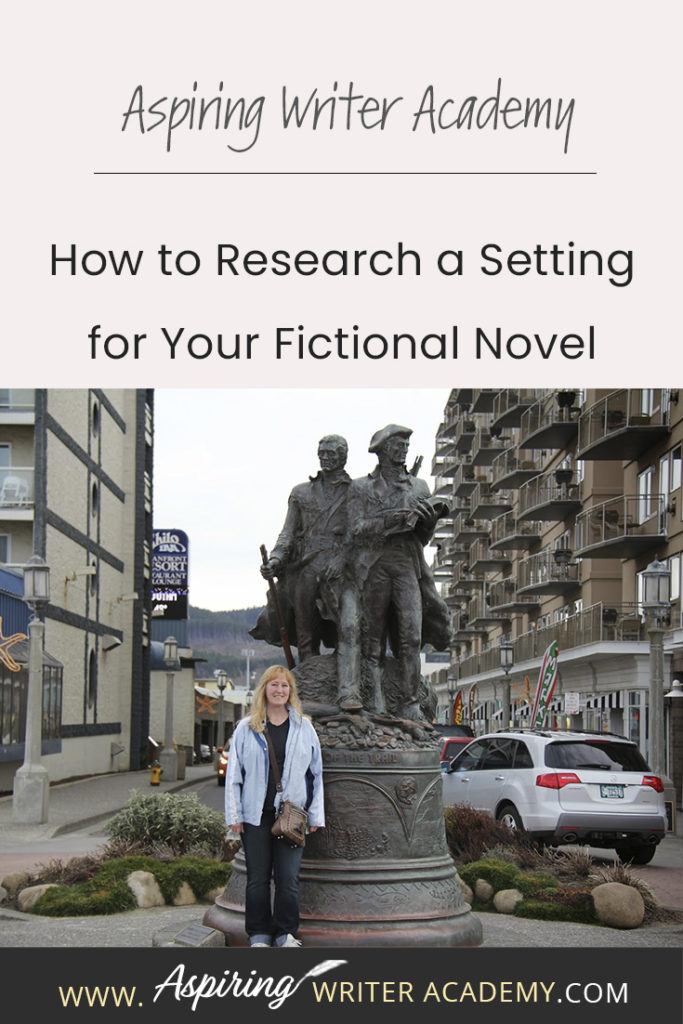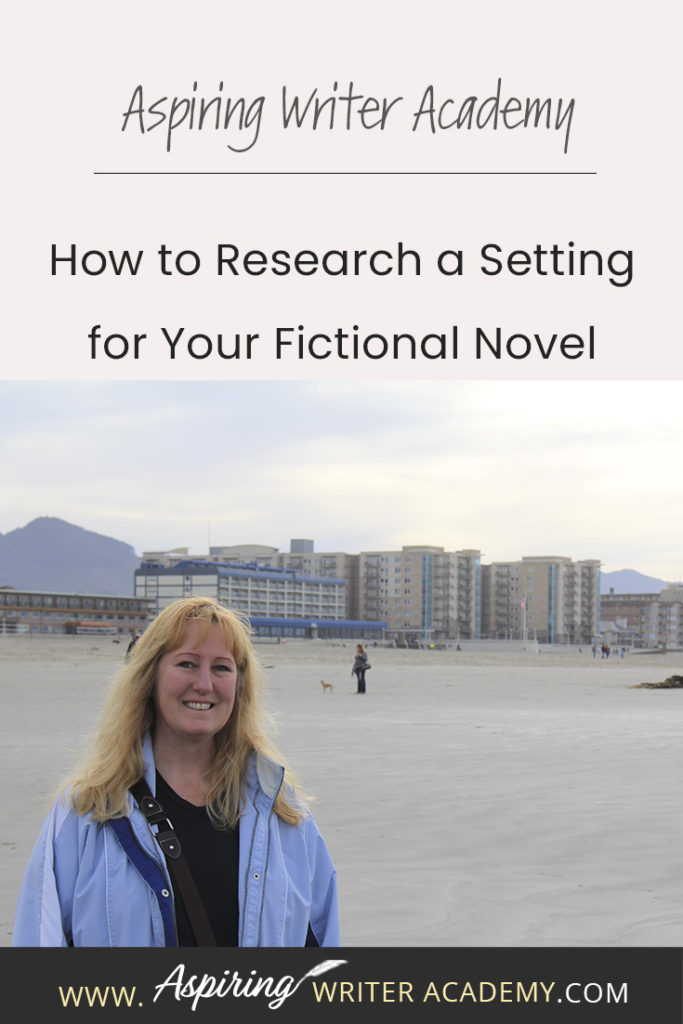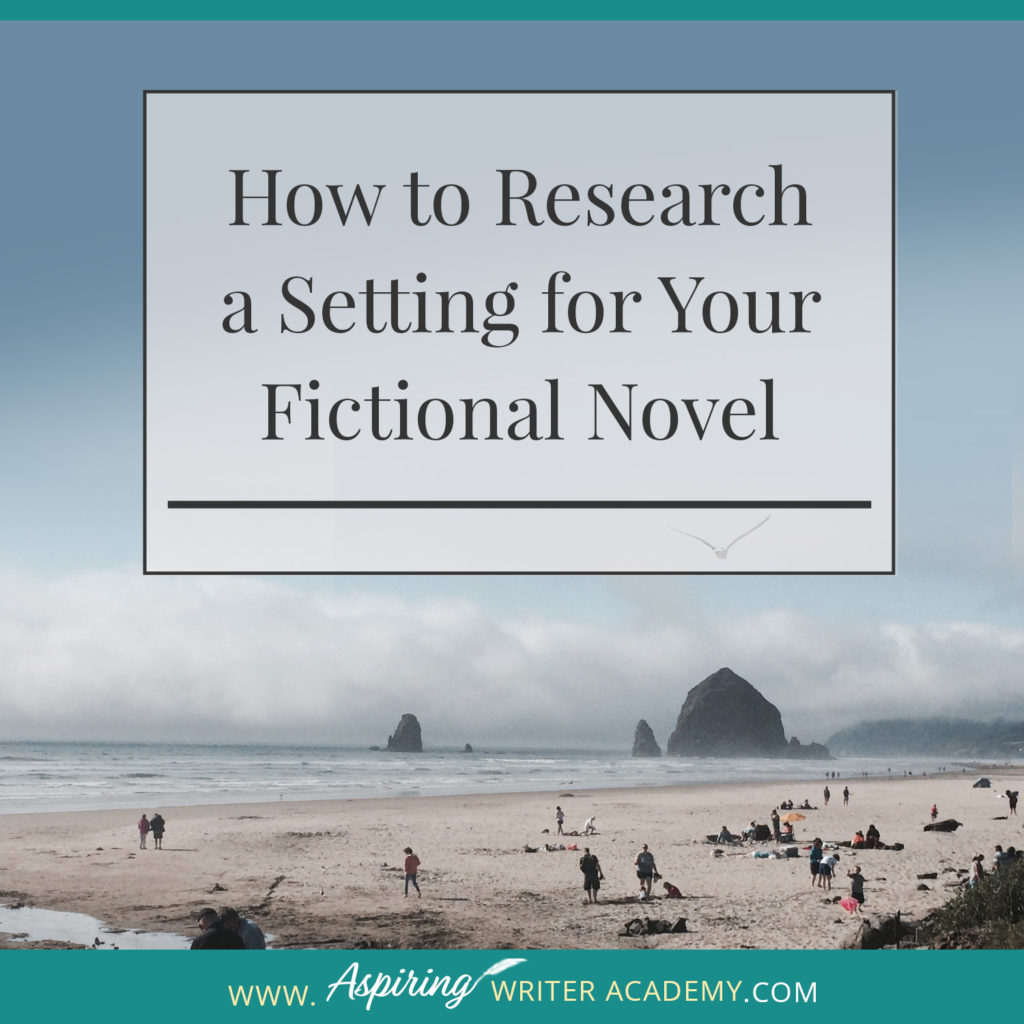How to Research a Setting for Your Fictional Novel
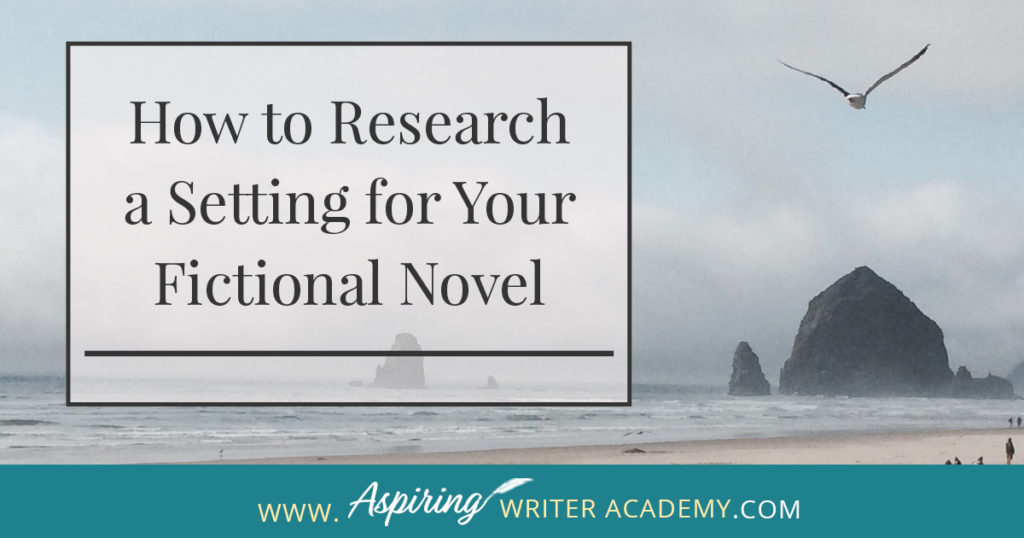
Settings. Where does your story take place? Is it a real place?
Even if you choose to ‘make up’ a setting, you may still want to base some of the details off a real place to make it feel real. Researching a setting may also inspire character or plot details.
In our post, How to Research a Setting for Your Fictional Novel, you can come along on a photo-journal research trip and learn a few tricks to create realistic settings for your own story.

Photo-Journal Research Trip by award-winning author, Darlene Panzera
HOW DOES AN AUTHOR GATHER THE DETAILS SHE NEEDS TO WRITE A BOOK? TAG ALONG ON A PHOTO-JOURNAL RESEARCH TRIP ALONG THE OREGON COAST!
1) If possible, visit the setting for your novel in person.
Hi! I’m Darlene Panzera, author of the sweet contemporary romance adult series, The Cupcake Diaries. I had already published the first few books in the series, but before I could write books 4 and 5, I knew I had to take a 4-hour road trip from my home in Washington down to the Oregon Coast. I had been there several times before but needed to gather new info and take a fresh look at the landmarks in the surrounding area with an author’s eye. My husband drove, so I was free to scribble ideas on my notepad whenever they came to me.
Our first stop was at the Pig ‘N Pancake restaurant in Astoria to get coffee and a good breakfast. Afterwards I took photos of the sprawling Astoria-Megler Bridge from the parking lot. Astoria is the seaport town where the majority of the first 4 books in the series is set.
I take pictures so when I am back home at my desk, I have a clear visual of the setting as I am writing and can describe all the little details.
- What does this place look like?
- How does it smell?
- What can I taste?
- What are the sounds that I hear?
- How does this place make me feel?
- What is the temperature at this time of year?
- What time does the sun rise and set?
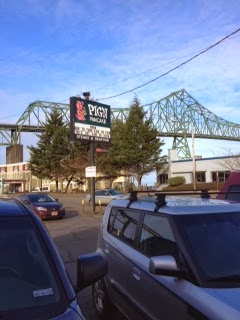
We continued our journey and arrived in Cannon Beach forty minutes later. Book 5 - The Cupcake Diaries: Sprinkled with Kisses - is set at this location.
2) But what if you can’t travel?
When I wrote the rough draft of Book 5, I used the Google Earth web cam (https://earth.google.com) to view various streets in Cannon Beach where I could place my heroine’s pink Volkswagen bus cupcake stand. I was happy to see the web cam had been extremely accurate - I recognized the spot as soon as I saw it. As I walked the beach and traveled all the paths my heroine, Stacey, took in the book, I used my camera to photograph everything. I used these pictures for blogposts, newsletters, and other promotion for the new book release.
You can also gather pictures of your chosen location from free stock image sites such as:
3) Gather travel guides, maps, pamphlets.
Next, we visited the tourist information center where I talked with the woman in charge about festivals and events that might impact my characters at different times of the year. I also picked up maps, booklets, postcards, pamphlets, magazines, and newspapers from the area to help set my scenes with accurate detail and historical background.
- What is the history behind this setting? What significant events have happened here in the past?
- Who lives here? Is this place known for any famous, unique, or notorious individuals or people groups? What do they look like? How do they talk? How are they dressed?
- What is this town best known for? What are the customs?
- Which landmarks stand out most?
Again, if you cannot visit in person, many of these items can also be collected from bookstores and online retailers. You may also be able to contact the information centers, historical centers, museums, and giftshops to see if they might be able to mail you the items that you need. You can also gather background information from Google, Pinterest, and other online websites.


4) Talk to the locals.
If you can travel to the location, you may gain first-hand stories as well as interesting tidbits and facts from locals that you cannot find anywhere else.
In Cannon Beach, we went to Simply Cakes by Jae and bought 4 cupcakes: 2 vanillas with raspberry filling and Italian butter cream icing, 1fudge filled chocolate, and 1 caramel filled chocolate. These are simply the best cupcakes I’ve ever tasted! No doubt descriptions of these scrumptious cupcakes will find their way into my books.
Jae’s shop was originally located in Astoria (Setting for Books 1-4) and when she moved to Cannon Beach, I was inspired to have my cupcake shop girls (Andi, Rachel, and Kim) expand their business and run a beach stand for Book 5.
Jae has been a valuable source of information, not only for details about running a cupcake shop, but for giving me local resident insight. Many scenes in the book series were inspired by our previous conversations. This time we talked for 1 ½ hours. I also planned to have a book signing at her shop (with cupcakes!) when the book released.

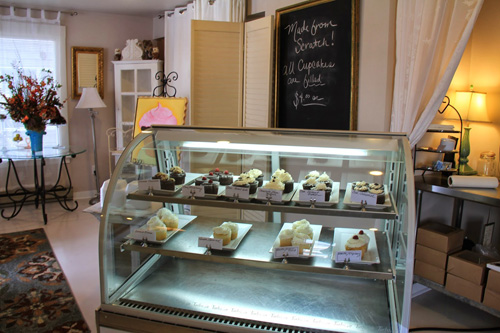
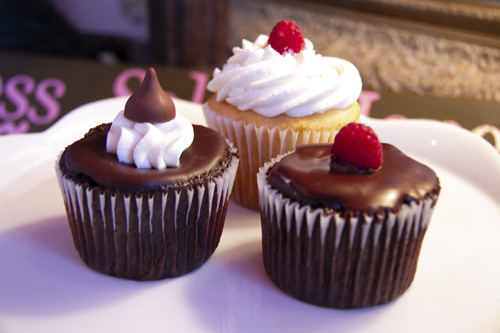
While I was in town, I also stopped in the local bookstore to see if they’d be interested in a book signing and learned the library features local authors once a month.

5) Look for details that may inspire ideas for your story
Next stop: Seaside. This is the location for a future book in the series, possibly Book 6. I picked Seaside to be the town where my cupcake shop girls open their second shop for several reasons.
Seaside has volleyball tournaments on the beach, something I plan to bring into the plot. And it has an aquarium where you can feed the seals. They are just so cute that I have to bring them into the story by setting an important scene there. Seaside is also a huge draw for tourists and has lots of fun and unique things for my new romantic couple to do.

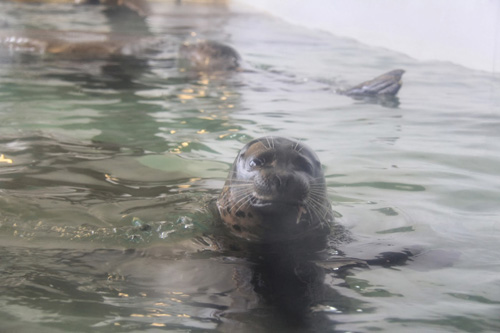
After checking into our hotel, we walked to the circular promenade at the end of the main street by the beach. The statues of historical pioneers Lewis and Clark stand in the middle and when I saw a pictorial engraved handshake on the monument with the words, “peace and friendship,” I thought that could very well be this new book’s theme.


6) Take as many photos of the area as you can.
Day 2 of the research trip was much lighter. I took more photos. The purpose of the pictures is 3-fold. I can use them for promotion, look at them while I write for inspiration and accurate detail, and they help me find possible locations for scenes set in the story.
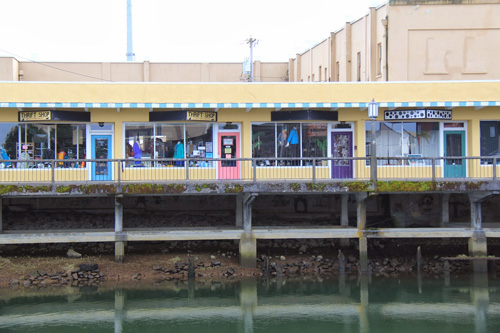
I found the perfect place for the second cupcake shop next to our hotel in the Riverside Walk shops. I went across the bridge to take photos of the shop from the opposite side of the river and discovered two furry otters scratching their backs on the wooden dock. There is no doubt - these little guys will also find a way into this story!

7) Visit local attractions.
My husband and I went into the Seaside Aquarium today and I gathered information for scenes, which can tie in with the story’s theme and plotline, by reading some of the descriptions and backgrounds of the fish. Very cool! The background for one type of fish symbolizes my main character’s trials in the story.


I also visited two more bookstores and talked to each of them about possible book signings in hopes of grouping some of these together into one weekend the next time I come down. Always multi-tasking! For more information visit: www.darlenepanzera.com
Shop Now: https://amzn.to/3sNlJii
Shop Now: https://amzn.to/3uMDocf
Shop Now: https://amzn.to/34HZ3rB
Shop Now: https://amzn.to/3oQRLJ0
Shop Now: https://amzn.to/3uMbLQJ
I hope you’ve enjoyed the tour and that How to Research a Setting for Your Fictional Novel has helped you come up with some ideas on how you can research a setting for your own novel, even if you cannot visit a particular place in person.
If you would like additional help writing your fictional story, you may also want to check out our Brainstorming Your Story Idea Worksheet.
Do you find it difficult to create compelling antagonists and villains for your stories? Do your villains feel cartoonish and unbelievable? Do they lack motivation or a specific game plan? Discover the secrets to crafting villains that will stick with your readers long after they finish your story, with our How to Create Antagonists & Villains Workbook.
This 32-page instructional workbook is packed with valuable fill-in-the-blank templates and practical advice to help you create memorable and effective antagonists and villains. Whether you're a seasoned writer or just starting out, this workbook will take your writing to the next level.
If you have any questions or would like to leave a comment below, we would love to hear from you!
Our Goal for Aspiring Writer Academy is to help people learn how to write quality fiction, teach them to publish and promote their work, and to give them the necessary tools to pursue a writing career.

ENTER YOUR EMAIL BELOW
TO GET YOUR FREE
"Brainstorming Your Story Idea Worksheet"
7 easy fill-in-the-blank pages,
+ 2 bonus pages filled with additional story examples.
A valuable tool to develop story plots again and again.
Other Blog Posts You May Like
The Ultimate Book Signing Checklist: What to Bring to Your First Book Signing
5 Questions to Create Believable Villains
Why Your Characters Need Story-Worthy Goals
3 Levels of Goal Setting for Fiction Writers
Fiction Writing: How to Write a Back Cover Blurb that Sells
Fiction Writing: How to Name Your Cast of Characters
How to Captivate Your Readers with Scene-Ending Hooks
Scene & Sequel: The Secret to Plotting an Epic Novel
Scene & Sequel: The Secret to Plotting an Epic Novel (Part 2)
Writing Fiction: How to Develop Your Story Premise
12 Quick Tips to Write Dazzling Dialogue
10 Questions to Ask When Creating Characters for Your Story
Macro Edits: Looking at Your Story as a Whole
Basic Story Structure: How to Plot in 6 Steps

is a multi-published author, speaker, and writing coach. She writes sweet contemporary, inspirational, and historical romance and loves teaching aspiring writers how to write quality fiction. Read her inspiring story of how she published her first book and launched a successful writing career.

